A - Titles by alphabet
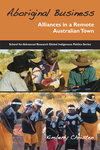
Kimberly Christen
2009. From the vantage point of the remote Northern Territory town of Tennant Creek in Australia, this book examines the practical partnerships and awkward alliances that constitute Indigenous modernities. It is an ethnographic snapshot of the Warumungu people as they engage with a range of interlocutors, including transnational railroad companies, national mining groups, international tourists, and regional businesses.
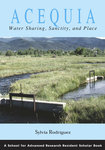
Sylvia Rodríguez
2006. Every society must have a system for capturing, storing, and distributing water, a system encompassing both technology and a rationale for the division of this finite resource. Today, people around the world face severe and growing water scarcity, and everywhere this vital resource is ceasing to be a right and becoming a commodity.

Edited by Kevin A. Yelvington
2006. This book breaks new theoretical and methodological ground in the study of the African diaspora in the Atlantic world. Leading scholars of archaeology, linguistics, and socio-cultural anthropology draw upon extensive field experiences and archival investigations of black communities in North America, the Caribbean, South America, and Africa to challenge received paradigms in Afro-American anthropology.
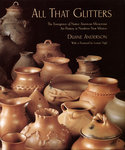
Duane Anderson; Foreword by Lonnie Vigil
1999. All That Glitters, the first comprehensive study of the micaceous pottery tradition in New Mexico, explores the current transition of micaceous pottery from a traditional culinary ware to an exciting contemporary art form. The illustrated catalog of the micaceous pottery collection at SAR’s Indian Arts Research Center and a roster of micaceous potters practicing in northern New Mexico today further details the art form.

Photographs by Maeve Hickey; Text by Lawrence Taylor
2002. Evoking the startling contrasts, brutalities, radiant beauty, and resilient people, these astonishing duotone photographs and penetrating essays reveal the ironic embrace of Nogales. The would-be immigrant caught in the tunnel between Nogales, Sonora, and Nogales, Arizona, knows life is dangerous and surprising.

Edited by Nancy Foner
2003. Soaring immigration to the United States in the past few decades has reawakened both popular and scholarly interest in this important issue. American Arrivals highlights the important insights of anthropology for the field of migration studies.

1988. The contributors to this book seek to reconstruct the past environment of the North American Southwest using geological and botanical remains, particularly the evidence from tree rings. Archaeological predictions about the ways in which the Anasazi (ancestral Pueblo) would react under certain environmental and demographic conditions are matched over time against the reconstructed environment to provide an understanding of how human behavior is affected by the changing environment.
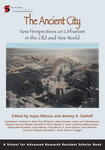
Edited by Joyce Marcus and Jeremy A. Sabloff
2008. Cities are so common today that we cannot imagine a world without them. More than half of the world’s population lives in cities, and that proportion is growing. Yet for most of our history, there were no cities. Why, how, and when did urban life begin?
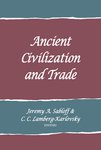
Edited by Jeremy A. Sabloff and C. C. Lamberg-Karlovsky
1975. The contributors to this volume explore trade’s dynamic role in the growth of early civilizations from the vantage points of archaeology, economics, social anthropology, and cultural geography.

Edited by Veena Das and Deborah Poole
2004. The very form and reach of the modern state are changing radically under the pressure of globalization. Featuring nine of the leading scholars in the field, this innovative exploration of these transformations develops an ethnographic methodology and theoretical apparatus to assess perceptions of power in three regions where state reform and violence have been particularly dramatic: Africa, Latin America, and South Asia.

Edited by John Hartigan
2013. What do we know about race today? After years of debate and inquiry by anthropologists, the question remains fraught with emotion and the answer remains complicated and uncertain. Anthropology of Race confronts the challenge of formulating an effective rejoinder to new arguments and new data about race, and attempts to address the intense desire to understand race and why it matters.

1990. This edited collection contains important new material on the origins and role of warfare in “tribal” societies. The chapters focus on a number of basic research issues, including war and social evolution, causes of war, ideology of war, and European transformation of indigenous warfare patterns.
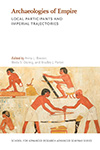
Edited by Anna L. Boozer, Bleda S. Düring, and Bradley J. Parker
2020. The goal of this volume is to harness the work of the “next generation” of empire scholars in order to foster new theoretical and methodological perspectives that are of relevance within and beyond archaeology and to foreground empires as a cross-cultural category.
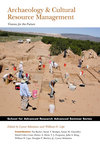
Edited by Lynne Sebastian and William D. Lipe
2010. By most estimates, as much as 90 percent of the archaeology done in the United States today is carried out in the field of cultural resource management. The contributors hope that this book will serve as an impetus in American archaeology for dialogue and debate on how to make CRM projects and programs yield both better archaeology and better public policy.
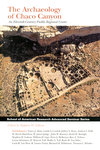
Edited by Stephen H. Lekson
2006. The site of a great Ancestral Pueblo center in the 11th and 12th centuries AD, the ruins in Chaco Canyon look like a city to some archaeologists, a ceremonial center to others. Chaco and the people who created its monumental great houses, extensive roads, and network of outlying settlements remain an enigma in American archaeology.

Edited by Gil J. Stein
2005. Colonialism and its legacies have emerged as one of the most important research topics in anthropology. Indeed, we now understand that colonialism gave rise to and shaped the discipline. However, the understanding of colonization in anthropology, history, and other fields derives largely from studies of European expansion.
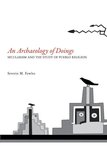
Severin M. Fowles
2013. In this probing study, Severin Fowles undertakes a sustained critique of religion as an analytical category in archaeological research.
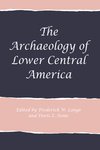
Edited by Fredrick W. Lange and Doris Z. Stone
1984. This book provides a much-needed overview of the archaeological past, present, and future of lower Central America. It addresses questions such as why the region never produced complex societies like its neighbors to the north and south and takes up themes such as ecological adaptation and subsistence, trade, and sociopolitical development.

Edited by William A. Parkinson and Michael L. Galaty
2010. By using a specific case study, the contributors to this book aim to help establish a common theoretical ground for investigating how humans and the societies they built interacted over time.
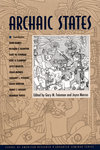
Edited by Gary M. Feinman and Joyce Marcus
1998. One of the most challenging problems facing contemporary archaeology concerns the operation and diversity of ancient states. This volume addresses how ancient states were structured and how they operated, an understanding of which is key to our ability to interpret a state’s rise or fall.
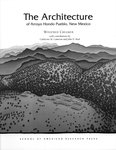
Winifred Creamer
1993. From 1971 to 1974, the School of American Research conducted a major multidisciplinary program of excavation and research at Arroyo Hondo Pueblo, one of the largest fourteenth-century Rio Grande sites. At its peak, Arroyo Hondo contained about one thousand rooms. This seventh volume in the series is focused on the walls, roomblocks, and architecture of public spaces at the site.

D. Bruce Dickson Jr.
1979. This second volume in the Arroyo Hondo series provides the results of the archaeological survey of this large prehistoric pueblo located just southeast of Santa Fe, New Mexico.
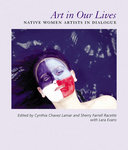
Edited by Cynthia Chavez Lamar and Sherry Farrell Racette with Lara Evans
2010. Art in Our Lives is the culmination of three seminars at SAR’s Indian Arts Research Center (IARC) that brought together Native women artists to discuss the balancing of their art practice with their myriad roles, responsibilities, and commitments.
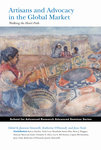
Edited by Jeanne Simonelli, Katherine O’Donnell, and June Nash
2015. Contributors to this book explore how crafts — pottery, weaving, basketmaking, storytelling — in Middle America and beyond are a means of making an intangible cultural heritage visible, material, and enduring. Each contribution shows how social science research can evolve into advocacy, collaboration, and friendship.
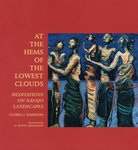
Gloria J. Emerson; Forward by N. Scott Momaday
2003. These poems, paintings, and personal reflections draw upon an ancient culture while crafting new visual and poetic “legends” to enrich our understanding of the significant places and stories that mark the traditional lands of the Navajo people. A book at once intimate, sweeping, and learned, At the Hems of the Lowest Clouds announces an important new Native American artistic voice.

Edited by Paul F. Reed and Gary M. Brown
2018. Often overshadowed by the Ancestral Pueblo centers at Chaco Canyon and Mesa Verde, the Middle San Juan is one of the most dynamic territories in the pre-Hispanic Southwest, interacting with Chaco Canyon and Mesa Verde as well as the surrounding regions.
B - Titles by alphabet
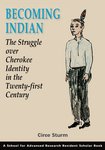 Becoming Indian
Becoming IndianCirce Sturm
2011. In Becoming Indian, author Circe Sturm examines Cherokee identity politics and the phenomenon of racial shifting. Racial shifters, as described by Sturm, are people who have changed their racial self-identification from non-Indian to Indian on the US Census.
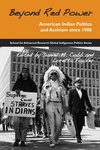
Edited by Daniel M. Cobb and Loretta Fowler
2007. How do we explain not just the survival of Indian people in the United States against very long odds but their growing visibility and political power at the opening of the twenty-first century?
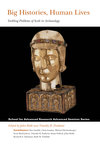
Edited by John Robb and Timothy R. Pauketat
2013. The contributors consider something archaeologists seldom think about: the intersection of micro-scale human experience with large-scale and long-term histories.

Edited by Nancy N. Chen and Lesley A. Sharp
2014. “Biosecurity” has ballooned into an increasingly mundane aspect of human experience, serving as a catchall for the detection, surveillance, containment, and deflection of everything from epidemics and natural disasters to resource scarcities and political insurgencies.

Edited by Sue Taylor Parker, Jonas Langer, and Michael L. McKinney
2000. An exciting new cross-disciplinary field of biocultural research is emerging at the start of the twenty-first century: developmental evolutionary biology.
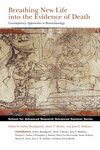
Edited by Aubrey Baadsgaard, Alexis T. Boutin, and Jane E. Buikstra
2012. Taking cues from current theoretical perspectives and capitalizing on the strengths of new and sophisticated methods of analysis, Breathing New Life into the Evidence of Death showcases the vibrancy of bioarchaeological research and its potential for bringing “new life” to the field of mortuary archaeology and the study of human remains.

Douglas W. Schwartz, Michael P. Marshall, and Jane Kepp
1979. Timeless Classics includes revived titles long out-of-print and brought to you via a print-on-demand publishing program. These titles have not been modified from the original and are now presented in paperback.
C - Titles by Alphabet
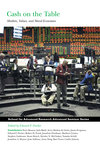
Edited by Edward F. Fischer
2014. A great deal is at stake in understanding the moral dimensions of economic behavior and markets. Public debates over executive compensation, the fair trade movement, and recent academic inquiries into the limitations of rational-choice paradigms all point to the relevance of moral values in our economic decision-making processes. Moral values inform economic behavior.

Edited by Vernon L. Scarborough
2005. In his thirty-four years as president of the School of American Research, Douglas W. Schwartz’s far-reaching vision placed SAR on the intellectual edge of research about humans across the globe. Nowhere is this more evident than in his influence on the field of anthropological archaeology.
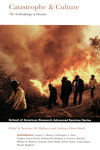
Edited by Susanna M. Hoffman and Anthony Oliver-Smith
2002. At a time of increasing globalization and worldwide vulnerability, the study of disasters has become an important focus for anthropological research-one where the four fields of anthropology are synthesized to address the multidimensionality of the effects to a community’s social structures and relationship to the environment.
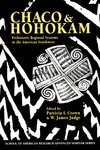
Edited by Patricia L. Crown and W. James Judge
1991. Synthesizing data and current thought about the regional systems of the Chacoans and the Hohokam, eleven archaeologists examine settlement patterns, subsistence economy, social organization, and trade, shedding new light on two of the most sophisticated cultures of the prehistoric Southwest.
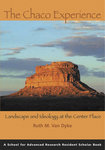
Ruth Van Dyke
2008. In a remote canyon in northwest New Mexico, thousand-year-old sandstone walls waver in the sunlight, stretching like ancient vertebrae against a turquoise sky. This storied place—Chaco Canyon—carries multiple layers of meaning for Native Americans and archaeologists, writers and tourists, explorers and artists.
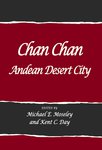
Edited by Michael E. Moseley and Kent C. Day
1982. The fourteen essays in this book focus on the Chan Chan-Moche Valley Project and analyze its five-year archaeological study. It includes chapters on irrigation, excavation results, and sociopolitical organization during the Early Intermediate Period in Peru.

1989. Bone chemistry is one of the most promising analytical methods now being used by archaeologists and physical anthropologists to investigate the past of the human species, and this state-of-the-art book includes many of the leading scientists in the field among its contributors.
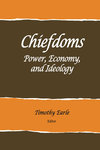
Edited by Timothy Earle
1991. The study of chiefdoms has moved from preoccupation with their formal characteristics to a concern with their dynamics as political institutions. The contributors to this volume are interested in how ruling elites retain power through control over production and exchange, and then legitimize that control through an elaborate ideology.
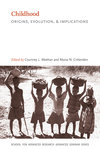
Edited by Courtney L. Meehan and Alyssa N. Crittenden
2016. This collection is the first to specifically address our current understanding of the evolution of human childhood, which in turn significantly affects our interpretations of the evolution of family formation, social organization, cultural transmission, cognition, ontogeny, and the physical and socioemotional needs of children.

Edited by T. Patrick Culbert
1973. Of the many mysteries surrounding ancient Maya civilization, none has attracted greater interest than its collapse in the eighth and ninth centuries AD. Until recently, speculations on the causes of the collapse have been more numerous than excavated sites in the area. But the past twenty-five years have produced many new findings. In this book, thirteen leading scholars use new data to revise the image of ancient Maya civilization and create a new model of its collapse—a general model of sociopolitical collapse not limited to the cultural history of the Maya alone.
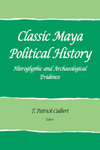
Edited by T. Patrick Culbert
1991. Ancient Maya civilization once flourished in the rainforests of what is today southern Mexico and Central America. It possessed the only full system of writing ever to be developed in the Americas. The pace of decipherment of Maya hieroglyphic writing has accelerated in the last few years, and half of the inscriptions from the sites of the Classic Period (AD 250–900) have now been read. Much of the newly available information consists of historical records of the careers of Maya rulers of the time.
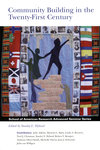
Edited by Stanley E. Hyland
2005. “Community” has long been a critical concept for social scientists, and never more so amid the growing economic inequity, natural and human disasters, and warfare of the opening years of the twenty-first century. In this volume, leading scholar-activists develop a conceptual framework for both the theory and practice of building communities.
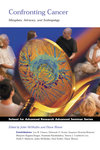
Edited by Juliet McMullin and Diane Weiner
2009 In this book, anthropologists examine the lived experiences of individuals confronting cancer and reveal the social context in which prevention and treatment may succeed or fail.

N. Edmund Kelley
1983. From 1971 to 1974, the School of American Research conducted a major multidisciplinary program of excavation and research at Arroyo Hondo Pueblo, one of the largest fourteenth-century Rio Grande sites. This first volume in the series covers the area’s topography, geology, soil, climate, hydrology, vegetation, and animal life.

Edited by E. Wyllys Andrews and William L. Fash
2005. This volume collects leading scholarship on one of the most important archaeological complexes in the ancient Maya world. The authors-internationally renowned experts who participated in the long-running Copán Acropolis Archaeological Project-address enduring themes in Maya archaeology.

Edited by Wenda R. Trevathan and Karen R. Rosenberg
2016. The authors take a broad look at how human infants are similar to and different from the infants of other species, at how our babies have constrained our evolution over the past six million years, and at how they continue to shape the ways we live today.
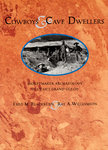
Fred M. Blackburn and Ray A. Williamson
1997. In this book, Fred M. Blackburn and Ray A. Williamson tell the two intertwined stories of the early archaeological expeditions into Grand Gulch and the Wetherill-Grand Gulch Research Project. In the process, they describe what we now know about Basketmaker culture and present a stirring plea for the preservation of our nation’s priceless archaeological heritage. Lavishly illustrated with color and black-and-white photographs.
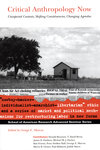
Edited by George E. Marcus
1999. Building on the legacy of Writing Culture, Critical Anthropology Now vividly represents the changing nature of anthropological research practice, demonstrating how new and more complicated locations of research-from the boardrooms of multinational corporations to the chat rooms of the Internet-are giving rise to shifts in the character of fieldwork and fieldworker.
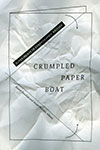
Edited by Anand Pandian and Stuart McLean
2017. Crumpled Paper Boat engages writing as a creative process of encounter, a way of making and unmaking worlds, and a material practice no less participatory and dynamic than fieldwork itself.

Edited by Gary Lee Downey and Joseph Dumit
1998. Some of the country’s most influential thinkers use anthropological methods and theories to examine the practices and practitioners of contemporary science, technology, and medicine in the United States. The authors explore such questions as how science gains authority to direct truth practices, the boundaries between humans and machines, and how science, technology, and medicine contribute to the fashioning of selves.
D - Titles by Alphabet

Jill D. Sweet
2004. This expanded edition reflects these changes by featuring the voices of Tewa dancers, composers, and others to explain the significance of dance to their understanding of Tewa identity and community. The author frames their words with her own poignant reflections on more than twenty years of study and friendship with these creative and enduring people.
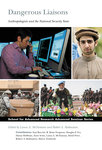
Edited by Laura McNamara and Robert A. Rubinstein
2011. Dangerous Liaisons is a book about intersections. It is a product of two year’s worth of discussion among a group of ethnographers from four different countries studying war, violence, the military, and the state.
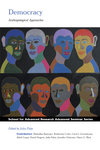
Edited by Julia Paley
2008. While previous scholars of democracy have proposed one definitive model after another, the authors in this work suggest that democracy is by nature an open ended set of questions about the workings of power—questions best engaged through the dialogical processes of fieldwork and ethnographic writing.

Edited by Ezra B. W. Zubrow
1976. The articles in this book explore relationships between demographic variables and culture, emphasizing cultural and biological structures and processes connected to population trends. In addition, the book covers topics dealing with sedentism, kinship, childhood marriage association, and stable and unstable economic growth.

Edited by Keith M. Murphy and Eitan Y. Wilf, with an afterword by Arturo Escobar
2021. The chapters in this captivating volume demonstrate the importance and power of design and the ubiquitous and forceful effects it has on human life within the study of anthropology. The scholars explore the interactions between anthropology and design through a cross-disciplinary approach, and while their approaches vary in how they specifically consider design, they are all centered around the design-and-anthropology relationship.

Edited by Anthony Oliver-Smith
2009. Resettlement has been so poorly planned, financed, implemented, and administered that these projects end up being “development disasters.” Because there can be no return to land submerged under a dam-created lake or to a neighborhood buried under a stadium or throughway, the solutions devised to meet the needs of people displaced by development must be durable. The contributors to this volume analyze the failures of existing resettlement policies and propose just such durable solutions.

Edited by Zoë Crossland and Rosemary A. Joyce
2015. Although often considered narrowly in terms of its technical and methodological aspects, forensic practice draws upon multiple dimensions of anthropology, and this volume offers a range of anthropological perspectives on the work of exhumation and the attendant issues.
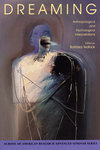
Edited by Barbara Tedlock
1992. The ten contributors to this book-anthropologists and psychologists-explore the ways in which dreams are remembered, recounted, shared (or not shared), interpreted, and used by people from New Guinea to the Andes. The authors take a major step toward moving the study of dreaming from the margins to the mainstream of anthropological thought.

Edited by Art Gallaher, Jr. and Harland Padfield
1980. This book is a thorough exploration of the decline of the little community in the face of urbanization, industrialization, and bureaucratization. Developing a conceptual and theoretical framework for examining community decline and dissolution, the book looks at the relationships between the dying community and its natural resource base, the role of outside political authority, and the social and demographical processes associated with community decline.
E - Titles by Alphabet
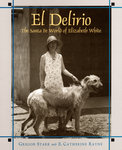
Gregor Stark and E. Catherine Rayne
1998. Richly illustrated with many previously unpublished photographs, El Delirio offers an appealing glimpse into a fascinating period of Santa Fe history. It is also a loving portrait of the remarkable, energetic, and strong-willed Elizabeth White, described by a friend as “one of the great women of the Southwest in a very small body.”
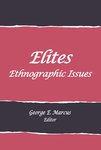
Edited by George E. Marcus
1983. This book is a collection of essays focusing on the role that elites play in shaping modern societies. Critiquing the treatment accorded elites as subjects in recent Western social thought, the essays reflect upon past results and explore directions in the investigation of elite groups by anthropologists.
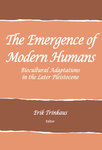
Edited by Erik Trinkaus
1989. This volume is a collection of essays identifying the current issues regarding the origins and emergence of a “modern” human biological and behavioral pattern from the earlier patterns inferred for late archaic humans. They identify changing behavioral complexes in human life during the period between 120,000 and 20,000 years ago, and examine paleontological and archaeological approaches to such phenomena.
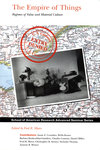
Edited by Fred R. Myers
2002. Representing a new wave of thinking about material culture studies-a topic long overdue for reevaluation-the essays in this volume take a fresh look at the relationship between material culture and exchange theory and illuminate the changing patterns of cultural flow in an increasingly global economy and the cultural differences registered in “regimes of value.”
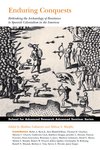
Edited by Matthew Liebmann and Melissa S. Murphy
2011. Enduring Conquests presents new interpretations of Native American experiences under Spanish colonialism and challenges the reader to reexamine long-standing assumptions about the Spanish conquests of the Americas.

Edited by Sidney M. Greenfield, Arnold Strickon, and Robert T. Aubey
1979. This book is a collection of essays on business behavior that examine the relationships between business enterprises and family networks. The essays deal with universal subjects that describe the effects of marriage, death, and birth upon the individual and corporate enterprise.
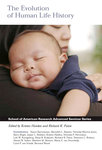
Edited by Kristen Hawkes and Richard R. Paine
2006. Human beings may share 98 percent of their genetic makeup with their nonhuman primate cousins, but they have distinctive life histories. When and why did these uniquely human patterns evolve? To answer that question, this volume brings together specialists in hunter-gatherer behavioral ecology and demography, human growth, development, and nutrition, paleodemography, human paleontology, primatology, and the genomics of aging.

Edited by Kevin J. Vaughn, Jelmer W. Eerkens, and John Kantner
2010. This book brings together the perspectives of cultural anthropologists and archaeologists to explore why and how leadership emerges and variously becomes institutionalized among disparate human societies.
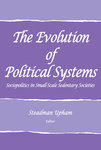
Edited by Steadman Upham
1990. Throughout the world, the development of agriculture produced dramatic changes in human cultural systems. As people settled down in one locality, populations grew rapidly, patterns of subsistence were transformed, technology became more advanced, and the nature of social and political relations changed. People no longer interacted exclusively with kin, as they had in the past when organized in bands, and new forms of political relationships between groups were established. The emergence of these political systems was the first step in the evolution of the state.

Christopher Ball
2018. Showing ritual as a contributing factor to relationships of development and the politics of indigeneity, Exchanging Words asks how discourse, ritual, and exchange come together to mediate social relations close to home and on a global scale.
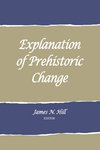
Edited by James N. Hill
1977. What is change? What is stability? How and why does each occur? Can they be predicted? The contributors discuss these questions and others about the nature of change through diverse case studies from Hawaii, Midwestern America, the American Southwest, Iran, and the Teotihuacan Valley in Mexico.

Edited by Richard A. Gould
1978. By observing changes in ancient midden deposits, or modern waste, the ethnoarchaeologist is able to theorize about relationships between these material remains and the human behavior that produced them. The contributors to this book cover diverse societies and attempt to establish behavioral patterns from the study of what humans leave behind.
F - Titles by Alphabet
 The Fabric of Indigeneity
The Fabric of Indigeneityann-elise lewallen
2016. In present-day Japan, Ainu women create spaces of cultural vitalization in which they can move between “being Ainu” through their natal and affinal relationships and actively “becoming Ainu” through their craftwork.
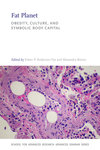
Edited by Eileen P. Anderson-Fye and Alexandra Brewis
2017. Fat Planet represents a collaborative effort to consider at a global scale what fat stigma is and what it does to people.

Richard W. Lang and Arthur H. Harris
1984. This fifth volume presents the results of faunal analysis from the Arroyo Hondo excavations, covering the topics of prehistoric vegetation and climate; the importance of various animals in the diet; seasonal hunting patterns; methods of butchering, skinning and cooking; the prehistoric hunting territory; the raising of domesticated dogs and turkeys; and trade in animals and animal products.
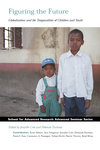
Edited by Jennifer Cole and Deborah Durham
2008. Child laborers in South Asia, child soldiers in Sierra Leone and Uganda, Chinese youth playing computer games to earn virtual gold, youth involved in sex trafficking in the former Soviet republics and Thailand: these are just some of the young people featured in the news of late. To address how and why youth and children have come to seem so important to globalization, the contributors to this book look at the both the spatial relations and the temporal dimensions of globalization in places as far apart as Oakland, California, and Tamatave, Madagascar, in situations as disparate as the idealization of childhood innocence and the brutal lives of street children.

Edited by Lynn H. Gamble
2015. Some of the most complex hunter-gatherer societies on earth flourished along California’s rugged coastline, and this volume brings together an impressive group of experts to tell the story of these Native groups’ brilliant adaptations to intensely challenging physical and social environments.

Erin Debenport
2015. In Fixing the Books, professor Erin Debenport (anthropology, University of New Mexico) presents the research she conducted on an indigenous language literacy effort within a New Mexico Pueblo community, and the potential of that literacy to compromise Pueblo secrecy.
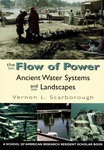
Vernon L. Scarborough
2003. This book is the first longitudinal study to consider water management worldwide since Karl Wittfogel put forth his “hydraulic societies” hypothesis nearly two generations ago, and it draws together the diverse debates that seminal work inspired. In so doing, Scarborough offers new models for cross-cultural analysis and prepares the ground for new examinations of power, centralization, and the economy.
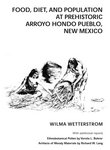
Wilma Wetterstrom; additional reports by Vorsila L. Bohrer and Richard W. Lang
1986. This sixth volume in the Arroyo Hondo series provides information on the food, diet, and population analysis of this large prehistoric pueblo located just southeast of Santa Fe, New Mexico.
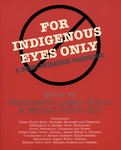
Edited by Waziyatawin Angela Wilson and Michael Yellow Bird
2005. Recognizing an urgent need for Indigenous liberation strategies, Indigenous intellectuals met to create a book with hands-on suggestions and activities to enable Indigenous communities to decolonize themselves. The authors begin with the belief that Indigenous Peoples have the power, strength, and intelligence to develop culturally specific decolonization strategies for their own communities and thereby systematically pursue their own liberation.

Edited by Waziyatawin and Michael Yellow Bird
2012. Included in this book are discussions of global collapse, what to consider in returning to a land-based existence, demilitarization for imperial purposes and re-militarization for Indigenous purposes, survival strategies for tribal prisoners, moving beyond the nation-state model, a land-based educational model, personal decolonization, decolonization strategies for youth in custody, and decolonizing gender roles.

Edited by Erica Bornstein and Peter Redfield
2011. Suffering and charity have a long history. Both human sorrows and attempted remedies were familiar features of life in earlier eras and religious traditions, however, during the final decades of the twentieth century, natural disasters and civilian casualties of war transformed into “humanitarian crises.” In these recurring dramas presented by international media, an extensive network of interstate entities and nongovernmental organizations (NGOs) supplies assistance to victims.
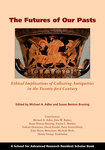
Edited by Michael A. Adler and Susan Benton Bruning
2012. Ownership of “the past”—a concept invoking age-old struggles to possess and control ancient objects—is an essential theme in understanding our global cultural heritage. Beyond ownership, however, lies the need for stewardship: the responsibility of owners, possessors, and others interested in ancient objects to serve as custodians for the benefit of present and future generations.
G - Titles by Alphabet
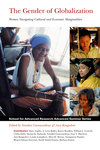
Edited by Nandini Gunewardena & Ann Kingsolver
2008. As “globalization” moves rapidly from buzzword to cliché, evaluating the claims of neoliberal capitalism to empower and enrich remains urgently important. The authors in this volume employ feminist, ethnographic methods to examine what free trade and export processing zones, economic liberalization, and currency reform mean to women in Argentina, Sri Lanka, Mexico, Ghana, the United States, India, Jamaica, and many other places.

Edited by Barbara Rylko-Bauer, Linda Whiteford, and Paul Farmer
2009. Over 24 million people have died in these conflicts, and millions more suffered illness and injury. In this volume, leading scholars and practitioners examine the impact of structural, military, and communal violence on health, psychosocial well-being, and health care delivery. By investigating the fields of violence that define our modern world, the authors are able to provide alternative global health paradigms that can be used to develop more effective policies and programs.

Edited by Rachel Heiman, Carla Freeman, and Mark Liechty
2012. Surging middle-class aspirations and anxieties throughout the world have recently compelled anthropologists to pay serious attention to middle classes and middle-class spaces, sentiments, lifestyles, labors, and civic engagements.
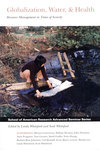
Edited by Linda Whiteford and Scott Whiteford
2005. This book is about crime and passion, life and death, lofty goals and squalid realities. It is a book about water. Global disparities in health and access to water are two major threats to world stability.
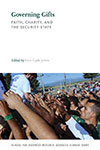
Edited by Erica Caple James
2019. The contributors trace the connections among piety, philanthropy, policy, and policing and seek to understand how faith and organized religious charity can be mobilized to govern populations and their practices.

Edited by Philip B. Stafford
2003. This volume features ten scholars from anthropology, nursing, sociology, gerontology, human geography, and other disciplines who provide ethnographic case studies exploring critical care decision-making, models of care for people with Alzheimer’s disease, the way residents cope with the limitations, indignities, and opportunities of nursing home life, the roles of family members and nursing home employees, and the formulation of assisted living.
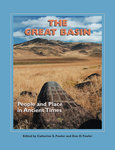
Edited by Catherine S. Fowler and Don D. Fowler
2008. This book is about a place, the Great Basin of western North America, and about the lifeways of Native American people who lived there during the past 13,000 years. The authors highlight the ingenious solutions people devised to sustain themselves in a difficult environment.
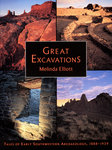
Melinda Elliott
1995. The magnificent ruins of the prehistoric peoples of the American Southwest have always been a source of wonder and awe. But the stories of the men and women who devoted their lives to the discovery and study of these lost cultures and the places they called home have never before been adequately told. Now, in Great Excavations, journalist and researcher Melinda Elliott uncovers the crucial and exciting role played by the great archaeologists of the late nineteenth and early twentieth centuries in unearthing the Southwest’s prehistoric past.
H - Titles by Alphabet

Edited by Barbara Rose Johnston
2007. The long Cold War of the twentieth century has ended, but only now are the poisonous legacies of that “first nuclear age” coming to light. Activists and anthropologists, the authors of this volume reveal the devastating, complex, and long-term environmental health problems afflicting the people who worked in uranium mining and processing, lived in regions dedicated to the construction of nuclear weapons or participated, often unknowingly, in radiation experiments.
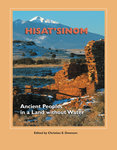
Edited by Christian E. Downum
2012. The national monuments of Wupatki, Walnut Canyon, and Montezuma’s Castle showcase the treasures of the first people who settled and developed farms, towns, and trade routes throughout northern Arizona and beyond. The Hopis call these ancient peoples “Hisat’sinom,” and Spanish explorers named their hard, arid homeland the sierra sin agua, mountains without water. Indeed, much of the region receives less annual precipitation than the quintessential desert city of Tucson. In Hisat’sinom: Ancient Peoples in a Land without Water, archaeologists explain how the people of this region flourished despite living in a place with very little water and extremes of heat and cold.
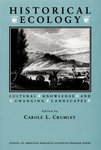
Edited by Carole L. Crumley
1994. Environmental change is one of the most pressing problems facing the world community. In this volume, the authors take a critical step toward establishing a new environmental science by deconstructing the traditional culture/nature dichotomy and placing human/environmental interaction at the center of any new attempts to deal with global environmental change.
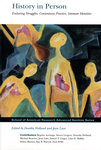
Edited by Dorothy Holland and Jean Lave
2001. Extended conflict situations in Northern Ireland or South Africa, the local effects of the rise of multinational corporations, and conflicts in workplaces, households, and academic fields are all crucibles for the forging of identities. In this volume, the authors bring their research to bear on enduring struggles and the practices of identity within those struggles. This collection of essays explores the innermost, generative aspects of subjects as social, cultural, and historical beings and raises serious questions about long-term conflicts and sustained identities in the world today.
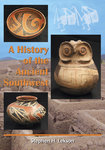
Stephen H. Lekson
2009. According to archaeologist Stephen H. Lekson, much of what we think we know about the Southwest has been compressed into conventions and classifications and orthodoxies. This book challenges and reconfigures these accepted notions by telling two parallel stories, one about the development, personalities, and institutions of Southwestern archaeology and the other about interpretations of what actually happened in the ancient past.

Garrick Bailey and Roberta Glenn Bailey; with a New Preface by Garrick Bailey
1999. A History of the Navajos examines these circumstances over the century and more that the tribe has lived on the reservation. In 1868, the year that the United States government released the Navajos from four years of imprisonment at Bosque Redondo and created the Navajo reservation, their very survival was in doubt. In spite of conflicts over land and administrative control, by the 1890s they had achieved a greater level of prosperity than at any previous time in their history.
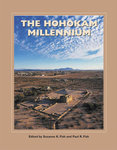
Edited by Suzanne K. Fish and Paul R. Fish
2008. The mystery and the beauty of Hohokam civilization are the subjects of the essays in this volume. Written by archaeologists who have led the effort to excavate, record, and preserve the remnants of this ancient culture, the chapters illuminate the way the Hohokam organized their households and their communities, their sophisticated pottery and textiles, their irrigation system, the huge ballcourts and platform mounds they built, and much more.

Edited by Sarah Besky and Alex Blanchette
2019. The authors of this volume push ethnographic inquiry beyond the anthropocentric documentation of human work on nature in order to develop a language for thinking about how all labor is a collective ecological act.
I - Titles by Alphabet
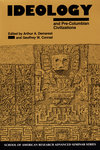 Ideology and Pre-Columbian Civilizations
Ideology and Pre-Columbian CivilizationsEdited by Arthur A. Demarest and Geoffrey W. Conrad
1992. Employing data from central Mexico, the Maya area, coastal Peru, and highland Peru and Bolivia, directors of several major archaeological field projects interpret evidence of prehistoric ideology and address the question, has ideology any relevance in the reconstruction of prehistory?

Edited by Patricia Spyer and Mary Margaret Steedly
2013. Images play a significant part in projects of “poetic world-making” and political transformation. They participate in the production of commensuration or of incommensurability, enact moments of prophecy or exposure, and attract or repel spectators’ attention. But any examination of images in motion must also recognize the blockages and breakdowns that prevent their movement, as well as the enframings or “stickinesses” that trap them in particular places and prevent them from reaching others.
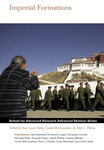
Edited by Ann Stoler, Carole McGranahan, and Peter Perdue
2007. The contributors to this volume critique and abandon the limiting assumption that the European colonialism of the late nineteenth and early twentieth centuries can be taken as the representative form of imperialism. Recasting the study of imperial governance, forms of sovereignty, and the imperial state, the authors pay close attention to non-European empires and the active trade in ideas, practices, and technologies among empires, as well as between metropolitan regions and far-flung colonies.

Joyce M. Szabo
2011. The study of what has become known as Plains Indian ledger art and of Fort Marion drawings in particular, has burgeoned in the last forty years. Joyce Szabo’s examination of the two drawing books by Zotom and Howling Wolf encompasses their origins and the issues surrounding their commission as well as what the images say about their creators and their collector.

Edited by David Grant Noble
2004. Startling discoveries and impassioned debates have emerged from the “Chaco Phenomenon” since the publication of New Light on Chaco Canyon twenty years ago. This completely updated edition features seventeen original essays, scores of photographs, maps, and site plans, and the perspectives of archaeologists, historians, and Native American thinkers.

David Grant Noble; Foreword by N. Scott Momaday
2010. In the Places of the Spirits features seventy-six duotone plates of the land, people, and deep past of the Southwest, most published here for the first time, accompanied by personal reflections that reveal much about the artist and the magnificent land that inspires his artistry.
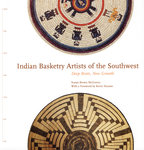
Susan Brown McGreevy; Foreword by Kevin Navasie
2001. Exploring the history and the current renaissance of basket making in the Native American Southwest, this lavishly illustrated volume features the work and words of the contemporary basket makers that participated in a Convocation at the School of American Research. The basket makers range in age from twenty-one to eighty-two and represent the Akimel O’odham, Apache, Hopi, Navajo, Pueblo, and Tohono O’odham tribes.
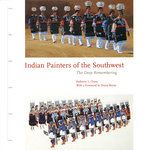
Katherine L. Chase; Foreward by Diane Reyna
2002. The book profiles ten outstanding painters representing seven different Pueblo Indian groups and the Navajo Nation who participated in a convocation at the Indian Arts Research Center at the SAR. While some artists have chosen to depict traditional scenes and symbols and others have chosen to create modern works influenced by Euro-American painting, all draw on the “deep remembering” of tribal heritage and personal experience and a heightened awareness of the artist’s role in more than one modern world.
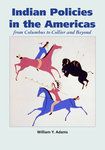
William Y. Adams
2014. In Indian Policies in the Americas, Adams addresses the idea that “the Indian,” as conceived by colonial powers and later by different postcolonial interest groups, was as much ideology as empirical reality. Adams surveys the policies of the various colonial and postcolonial powers, then reflects upon the great ideological, moral, and intellectual issues that underlay those policies.
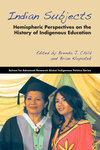
Edited by Brenda J. Child and Brian Klopotek
2014. Indian Subjects brings together an outstanding group of scholars from the fields of anthropology, history, law, education, literature, and Native studies to address indigenous education throughout different regions and eras.

Edited by Sherry L. Smith and Brian Frehner
2010. The authors consider the complex relationship between development and Indian communities in the Southwest in order to reveal how an understanding of patterns in the past can guide policies and decisions in the future. 2010
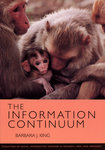
Barbara J. King
1994. The Information Continuum creates a synthetic view of the evolution of communication among primates. King contends that the crucial element in the evolution of information acquisition and transfer is the acquired ability to donate information to others.
J - Titles by Alphabet (No listings at this time)
K - Titles by Alphabet
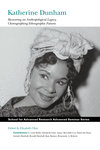 Katherine Dunham
Katherine Dunham Edited by Elizabeth Chin
2014. This book explores Katherine Dunham’s contribution to anthropology and the ongoing relevance of her ideas and methodologies, rejecting the idea that art and academics need to be cleanly separated from each other.
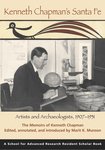
The Memoirs of Kenneth Chapman, Edited, annotated, and introduced by Marit K. Munson
2008. Archaeologist and rock art specialist Marit K. Munson presents a carefully edited and annotated edition of Chapman’s memoirs. Written in the late 1950s and early 1960s, Chapman’s side of the story is an intimate insider’s portrait of the personalities and events that shaped Santa Fe.

Edited by Benedict J. Colombi and James F. Brooks
2012. The histories and futures of Indigenous peoples and salmon are inextricably bound across the vast ocean expanse and rugged coastlines of the North Pacific. Keystone Nations addresses this enmeshment and the marriage of the biological and social sciences that have led to the research discussed in this book.
L - Titles by Alphabet
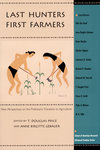 Last Hunters, First Farmers
Last Hunters, First FarmersEdited by T. Douglas Price and Anne Birgitte Gebauer
1996. In case studies ranging from the Far East to the American Southwest, the authors of Last Hunters-First Farmers provide a global perspective on contemporary research into the origins of agriculture. Downplaying more traditional explanations of the turn to agriculture, such as the influence of marginal environments and population pressures, the authors emphasize instead the importance of the resource-rich areas in which agriculture began, the complex social organizations already in place, the role of sedentism, and, in some locales, the advent of economic intensification and competition.
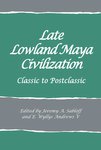
Edited by Jeremy A. Sabloff and E. Wyllys Andrews V
1986. In light of new and expanding research, the contributors to this volume premise that the relationship of Classic to Postclassic in the Northern and Southern Maya Lowlands is much more complex than was traditionally thought. The essays offer a useful introduction to current thought regarding the development of Lowland Maya civilization after the collapse of the Classic Period in the South.

Edited by Sally Engle Merry and Donald Brenneis
2004. Focusing on the intimate relationship between law, culture, and the production of social knowledge, these essays re-center law in social theory. The authors analyze the transition from chiefdom to capitalism, colonizers’ racial and governmental ideologies, land and labor policies, and contemporary efforts to recuperate indigenous culture and assert or maintain indigenous sovereignty. Speaking to Fijian and Hawaiian circumstances, this volume illuminates the role of legal and archival practice in constructing ethnic and political identities and producing colonial and anthropological knowledge.
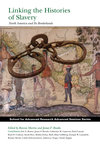
Edited by Bonnie Martin and James F. Brooks
2015. This volume has brought together scholars from anthropology, history, psychology, and ethnic studies to share their original research into the lesser known stories of slavery in North America and reveal surprising parallels among slave cultures across the continent.
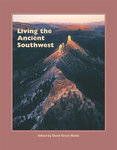
Edited by David Grant Noble
2014. How did Southwestern peoples make a living in the vast arid reaches of the Great Basin? When and why did violence erupt in the Mesa Verde region? Who were the Fremont people? How do some Hopis view Chaco Canyon? These are just a few of the topics addressed in Living the Ancient Southwest.
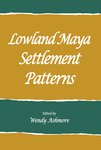
Edited by Wendy Ashmore
1981. This book is a series of essays that offers a framework for the study of lowland Maya settlement patterns, surveying the range of interpretive ideas about ancient Maya remains. Suggesting hypotheses to guide future research, the articles discuss historical, geographical, chronological, and theoretical matters.
M - Titles by Alphabet
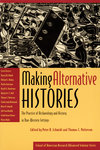 Making Alternative Histories
Making Alternative HistoriesEdited by Peter R. Schmidt and Thomas C. Patterson
1995. After working in Third World contexts for more than a century, many archaeologists from the West have yet to hear and understand the voices of their colleagues in non-Western cultural settings. In Making Alternative Histories, eleven scholars from Africa, India, Latin America, North America, and Europe debate and discuss how to respond to the erasures of local histories by colonialism, neocolonial influences, and the practice of archaeology and history as we know them today in North America and much of the Western world.

Craig R. Janes and Oyuntsetseg Chuluundorj
2015. The authors argue that the intersection of neoliberal economics and the ideologies that sustain it with climate change and its attendant hazards has created a perfect storm that has had and, without serious attention to rural development, will continue to have disastrous consequences for Mongolia.

Charles R. Hale
2006. This deeply researched and sensitively rendered study raises troubling questions about the contradictions of anti-racist politics and the limits of multiculturalism in Guatemala and, by implication, other countries in the midst of similar reform projects.
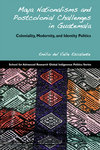
Emilio del Valle Escalante
2009. This book focuses on the emergence and political-cultural implications of Guatemala’s Maya movement.

Edited by Keith H. Basso and Henry A. Selby
1976. “Cultural anthropology’s main contribution to science has always been the investigation of the range of human cultures and the demonstration of the variety, including variety in symbols and meanings, in these cultures. In recent years, anthropological interest in meaning and symbolism has increased and moved into new types of analysis. Meaning in Anthropology is a useful array of papers representing some of these. Linguistics has had an especially strong influence on this movement, and a number of contributions show that influence.”—Science
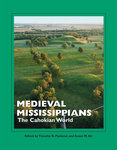
Edited by Timothy R. Pauketat and Susan M. Alt
2015. Medieval Mississippians, the eighth volume in the award-winning Popular Archaeology Series, introduces a key historical period in pre-Columbian eastern North America—the “Mississippian” era—via chapters on places, practices, and peoples written from Native American and non-Native perspectives on the past.
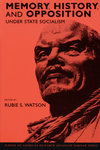
Edited by Rubie S. Watson
1994. Eight anthropologists, sociologists, and historians probe the oppositional narratives created by Chinese rural intellectuals, èmigrè Croats, and organized dissenters such as the Djilas of Yugoslavia who constructed and maintained oppositional histories in state socialist societies.
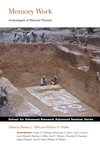
Edited by Barbara J. Mills and William H. Walker
2008. Memory making is a social practice that links people and things together across time and space and ultimately has material consequences. The intersection of matter and social practice becomes archaeologically visible through the deposits created during social activities. The contributors to this volume share a common goal to map out the different ways in which to study social memories in past societies programmatically and tangibly.
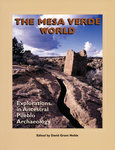
Edited by David Grant Noble
2006. The Mesa Verde World showcases new findings about the region’s prehistory, environment, and archaeological history, from newly discovered reservoir systems on Mesa Verde to astronomical alignments at Yellow Jacket Pueblo. Key topics include farming, settlement, sacred landscapes, cosmology and astronomy, rock art, warfare, migration, and contemporary Pueblo perspectives.

Edited by M. H. Crawford and P. L. Workman
1973. This book deals with the methods and theories used to study variation within and among human populations, specifically looking at genetics research conducted in the 1960s and 1970s. It presents empirical support for many modern theories in population genetics and demography.

Edited by Margaret C. Nelson and Michelle Hegmon
2010. The well-illustrated essays in this book offer the latest archaeological research on the ancient Mimbres to explain what we know and what questions still remain about men’s and women’s lives, their sustenance, the changing nature of leadership, and the possible meanings of the dramatic pottery designs.
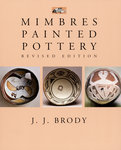
J. J. Brody
2005. The Mimbres cultural florescence between about AD 1000 and AD 1140 remains one of the most visually astonishing and anthropologically intriguing questions in Southwest prehistory.
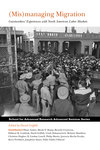
Edited by David Griffith
2014. Today managed migration is growing in North America. This mirrors the general growth of migration from poorer to richer countries, with more than 200 million people now living outside their natal countries. Faced with this phenomenon, managed migration enables nation-states to regulate those population movements; direct foreign nationals to specific, identified economic sectors that citizens are less likely to care about; match employers who claim labor shortages with highly motivated workers; and offer people from poorer countries higher earning potential abroad through temporary absence from their families and homelands.

Edited by Timothy A. Kohler and Sander E. van der Leeuw
2007. How should archaeologists and other social scientists tackle the big and little questions about change in socionatural systems? Although fieldwork is certainly the place to start, it alone is not enough to answer troublesome “how” or “why” questions. To make sense of what they find in the field, archaeologists build models-possible explanations for the data.

1950. This collection of vignettes written by colleagues, friends, and family of Sylvanus Morley provides an intimate look at a man who devoted his life to the study and understanding of the ancient Maya.

Edited by Adeline Masquelier and Benjamin F. Soares
2016. A new cohort of Muslim youth has arisen since the attacks of 9/11, facilitated by the proliferation of recent communication technologies and the Internet. By focusing on these young people as a heterogeneous global cohort, the contributors to this volume—who draw from a variety of disciplines—show how the study of Muslim youth at this particular historical juncture is relevant to thinking about the anthropology of youth, the anthropology of Islamic and Muslim societies, and the post-9/11 world more generally.
N - Titles by Alphabet

Edited by Catherine M. Tucker
2012. This book is about the complicated and provocative ways nature, science, and religion intersect in real settings where people attempt to live in harmony with the physical environment. The contributors explore how scientific knowledge and spiritual beliefs are engaged to shape natural resource management, environmental activism, and political processes.

David M. Brugge
2010. Combining archeological evidence with Navajo cultural precepts, David M. Brugge has used the records of the oldest European institution in the American Southwest, the Catholic Church, to shed some light on the practices, causes, and effects of Spanish, Mexican, and American occupation on the Navajo Nation.

Edited by Julie Armin, Nancy J. Burke, and Laura Eichelberger
2019. The contributors in this volume explore what it means to be structurally vulnerable; how structural vulnerabilities intersect with cancer risk, diagnosis, care seeking, caregiving, clinical-trial participation, and survivorship; and how differing local, national, and global political contexts and histories inform vulnerability.
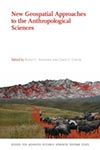
Edited by Robert L. Anemone and Glenn C. Conroy
2018. Spatial analysis reaches across all the subdisciplines of anthropology. A cultural anthropologist, for example, can use such analysis to trace the extent of distinctive cultural practices; an archaeologist can use it to understand the organization of ancient irrigation systems; a primatologist to quantify the density of primate nesting sites; a paleoanthropologist to explore vast fossil-bearing landscapes. Arguing that geospatial analysis holds great promise for much anthropological inquiry, the contributors have designed this volume to show how the powerful tools of GIScience can be used to benefit a variety of research programs.
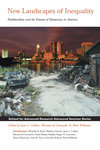
Edited by Jane L. Collins, Micaela di Leonardo, & Brett Williams
2008. Focusing on the United States, the contributors to this volume analyze how the globalization of newly untrammeled capitalism has exacerbated preexisting inequalities, how the retreat of the benevolent state and the rise of the punitive, imperial state are related, how poorly privatized welfare institutions provide services, how neoliberal and neoconservative ideologies are melding, and how recurrent moral panics misrepresent class, race, gendered, and sexual realities on the ground.
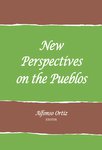
Edited by Alfonso Ortiz
1972. This volume, the result of an advanced seminar at the School of American Research, takes a fresh look at Pueblo Indian culture, with chapters on everything from language to religion, prehistory, ecology, and from literature to music.

Edited by Tressa Berman
2012. No Deal! encompasses a diverse group of artists, curators, art historians, and anthropologists from Australia and North America in order to investigate social relations of possession through the artifacts and motifs of Indigenous expressive culture. The contributors speak from the standpoints of Indigenous systems of knowledge as well as from western epistemologies and their institutions, interrogating what it means to “own culture.” The case studies in this volume contribute to notions of “ownership” and “possession” through the lens of art and its associated rights to production, circulation, performance, and representation.
O - Titles by Alphabet
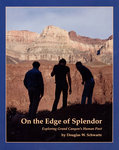
Douglas W. Schwartz
1989. The author’s research included major surveys and excavations in several crucial regions of the Grand Canyon. Written for a general audience, this book alternates between insightful accounts of Schwartz’s personal experiences in the canyon and explorations of the lives and cultures of its early and late inhabitants.

Maximilian Viatori
2010. This book traces the process of self-organization and emergence within Ecuador’s Indigenous movement from 1998 to 2008 for the Zápara nationality, one of the smallest Indigenous groups in Ecuador, to explore the complex role that multiculturalism has played in local identity politics.

Edited by Thomas W. Killion
2008. In 1989–90, Congress enacted two laws, the National Museum of the American Indian Act and the Native American Graves Protection and Repatriation Act, that required museums and other repositories of Native American human remains and cultural items to consult with, share information about, and return some items to federally recognized Indian tribes and Native Alaskan and Hawaiian communities.
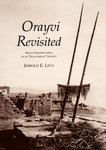
Jerrold E. Levy
1992. Challenging the widely held view of the Hopi Indians of Arizona as a sober, peaceful, and cooperative people with an egalitarian social organization, Levy examines the 1906 split in the Third Mesa village of Orayvi.
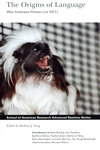
Edited by Barbara J. King
1999. In The Origins of Language, ten primatologists and paleoanthropologists conduct a comprehensive examination of the nonhuman primate data, discussing different views of what language is and suggesting how the primatological perspective can be used to fashion more rigorous theories of language origins and evolution.
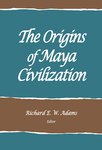
Edited by Richard E. W. Adams
1977. The contributors to this book scrutinize the data, survey external influences on the early Maya, and consider economics, ecology, demography, and warfare – as well as social and ideological factors – in explaining the transformation of Maya culture from a village-oriented society to one centered on elite classes living in large civic centers with monumental architecture.

Edited by Lawrence Rosen
1995. The authors argue that although intentionality might appear to be a wholly abstract phenomenon, it is deeply entwined with the nature and distribution of power, the portrayal of events, the assessment of personhood, the interplay of trust and deception, and the assessment of moral and legal responsibility.
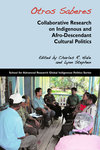
Edited by Charles R. Hale and Lynn Stephen
2014. The six research projects that form the core of the Otros Saberes initiative bring together a diverse group of Afro-descendant and indigenous collaborations with academics. The focus of each research project is driven by a strategic priority in the life of the community, organization, or social movement concerned. This book, written in English, Spanish, and Portuguese, provides an explanation of the key analytical questions and findings of each project.

Nancy Marie Mithlo
2009. In this pathbreaking study, anthropologist Nancy Marie Mithlo examines the power of stereotypes, the utility of pan-Indianism, the significance of realist ideologies, and the employment of alterity in Native American arts.

Jennifer A. Shannon
2014. In 2004 the National Museum of the American Indian (NMAI) opened to the general public. This book, in the broadest sense, is about how that museum became what it is today. For many Native individuals, the NMAI, a prominent and permanent symbol of Native presence in America, in the shadow of the Capitol and at the center of federal power, is a triumph.
P - Titles by Alphabet

Mateo Romero, with a foreword by Suzan Shown Harjo
2006. Painter Mateo Romero uses a bold, muscular style and thick, expressive paint to expose the fault lines and tragedies afflicting Native people today. At the same time, he offers a meditation on the difficult yet artistically stimulating process of cultural diaspora and return in which he and many other Native artists are engage.
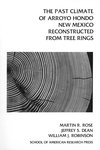
Martin R. Rose, Jeffrey S. Dean, and William P. Robinson
1983. This landmark study uses archaeological tree-ring chronologies in the first attempt to quantitatively reconstruct past climate variability. After a step-by-step explanation of the statistical methods the authors reconstruct in inches the annual and spring precipitation of the Arroyo Hondo area for each year from AD 985 to 1970. This is the fourth volume in the series.
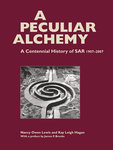
Nancy Owen Lewis and Kay Leigh Hagan; Preface by James F. Brooks
2007. In 2007, SAR celebrated its 100th anniversary. Established to promote the study of American antiquity, the School now supports wide-ranging programs dedicated to increasing our understanding of human culture and evolution through the arts, humanities, and social sciences.
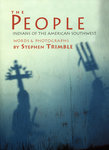
Text and photographs by Stephen Trimble
1993. Fifty Indian nations lie within the modern American Southwest, communities sustained through four centuries of European and American contact by their cultural traditions and ties to the land. In The People, Stephen Trimble provides an introduction to these Native peoples that is unrivaled in its scope and readability.
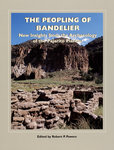
Edited by Robert P. Powers
2005. Few visitors to the stunning Frijoles Canyon at Bandelier National Monument realize that its depths embrace but a small part of the archaeological richness of the vast Pajarito Plateau west of Santa Fe, New Mexico.

Edited by Janis H. Jenkins
2011. This book addresses a critical contemporary issue—the worldwide proliferation of pharmaceutical use. The contributors explore questions such as: How are culturally constituted selves transformed by regular ingestion of pharmaceutical drugs? Does “being human” increasingly come to mean not only oriented to drugs but also created and regulated by them? From the standpoint of cultural phenomenology, does this reshape human “being”?

Edited by Elmer Harp, Jr.
1975. Contemporary archaeology is increasingly reliant upon photography as a working tool and as a medium for communicating the results of field research. The chapters in this book provide detailed, practical advice and information on photography in the field—from the air, underwater, and in the lab.

Edited by John M.Watanabe and Edward F. Fischer
2004. This volume brings together eight Maya specialists and a prominent anthropological theorist as discussant to assess the contrasting historical circumstances and emerging cultural futures of Maya in Mexico and Guatemala.

Edited by Peter R. Schmidt
2009. Postcolonial Archaeologies in Africa features some of the foremost archaeologists from Africa and the United States and presents cutting-edge proposals for how archaeology in Africa today can be made more relevant to the needs of local communities.
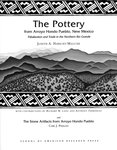
Judith A. Habicht-Mauche
1993. Arroyo Hondo Pueblo, one of the largest fourteenth century sites in the northern Rio Grande region, was excavated by the School of American Research under the leadership of Douglas W. Schwartz between 1970 and 1974. In this eighth volume of the Arroyo Hondo Archaeological Series, Judith A. Habicht-Mauche presents a masterful description and interpretation of the pottery from Arroyo Hondo.
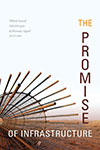
Edited by Nikhil Anand, Akhil Gupta, and Hannah Appel
2018. While infrastructures promise modernity and development, their breakdowns and absences reveal the underbelly of progress, liberal equality, and economic growth. This tension, between aspiration and failure, makes infrastructure a productive location for social theory.
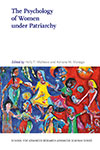
Edited by Holly F. Mathews and Adriana M. Manago
2019. These feminist scholars bridge preexisting divides between bio-psychological, sociological, and cultural perspectives to explain the ways that women’s desires, goals, and identities interact with culturally situated systems in order to develop more complex theories about the psychological underpinnings of patriarchy and to inform more socially progressive policies to improve the lives of women and men globally.
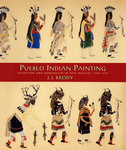
J. J. Brody
1997. A new tradition of Pueblo fine art painting arose in the first three decades of the twentieth century, born out of a dynamic encounter between the Pueblo and Euro-American communities in and around Santa Fe, New Mexico.

Ann M. Palkovich
1983. Excavation at Arroyo Hondo yielded 120 human skeletons, many accompanied by grave goods. This book describes and interprets the skeletal and mortuary remains.
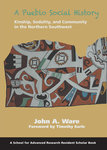
John A. Ware; foreword by Timothy Earle
2014. A Pueblo Social History explores the intersection of archaeology, ethnohistory, and ethnology. John Ware argues that all of the key Pueblo social, ceremonial, and political institutions—and their relative importance across the Pueblo world—can only be explained in terms of indigenous social history stretching back nearly two millennia.
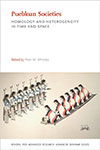
Edited by Peter M. Whiteley
2018. The contributors draw upon the insights of archaeology, ethnology, and linguistic anthropology to examine social history and practice, including kinship groups, ritual sodalities, architectural forms, economic exchange, environmental adaptation, and political order, as well as their patterns of transmission over time and space.
Q - Titles by Alphabet (No listings at this time)
R - Titles by Alphabet
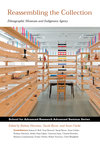
Edited by Rodney Harrison, Sarah Byrne, and Anne Clarke
2013. Reassembling the Collection presents innovative approaches to the study of historical and contemporary engagements between museums and the various individuals and communities who were (and are) involved in their production and consumption.

Edited by Richard G. Fox
1991. The ten papers in this volume offer different versions of how and where anthropologists might work usefully in today’s world, converging on the issue of how anthropology can best recapture the progressive character its basic concepts, such as “culture,” once had.
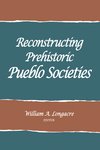
Edited by William A. Longacre
1970. The chapters in this book focus on methods and theories used to systematically test hypotheses about prehistoric social organization. The concern with social organization reflects a larger trend in archaeology that stresses the recovery and use of pertinent data for testing ideas and assumptions.
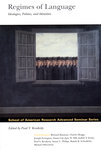
Edited by Paul V. Kroskrity
2000. In Regimes of Language, ten leading linguistic anthropologists integrate two often segregated domains: politics (without language) and language (without politics). Their essays contribute to an understanding of the role of language ideologies and discursive practices in state formation, nationalism, and the maintenance of ethnic groups, on the one hand, and in the creation of national, ethnic, and professional identities, on the other.
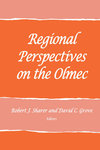
Edited by Robert J. Sharer and David C. Grove
1989. The archaeological culture known as the Olmec has long been associated with the genesis of civilization in Mexico—the transition from simple, agricultural societies to near-urban states during the Mesoamerican Formative, which culminated in the empire of the Maya.

Edited by John P. Hawkins, with a foreword by John M. Watanabe
2021. Drawing on over fifty years of research and data collected by field-school students, Hawkins argues that two factors—cultural collapse and systematic social and economic exclusion—explain the recent religious transformation of Maya Guatemala and the style and emotional intensity through which that transformation is expressed.

Edited by Sarah Franklin and Margaret Lock
2003. The boundaries of life now occupy a place of central concern among biological anthropologists. Because of the centrality of the modern biological definition of life to Euro-American medicine and anthropology, the definition of life itself and its contestation exemplify competing uses of knowledge.
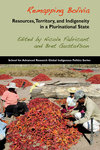
Edited by Nicole Fabricant and Bret Gustafson
2011. The 2005 election of Evo Morales to the presidency of Bolivia marked a critical moment of transformation—a coca farmer and peasant union leader became the first indigenous president in the history of the Americas.

Robert Albro
2010. Roosters at Midnight is an ethnography about the political lives and careers of a growing urban-dwelling and indigenous constituency that operates primarily within the informal economy in and around the provincial capital Quillacollo.
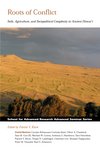
Edited by Patrick V. Kirch
2011. Roots of Conflict presents the efforts of a team of social and natural scientists to understand the complex, systemic linkages between land, climate, crops, human populations, and their cultural structures.
S - Titles by Alphabet
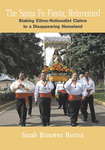 The Santa Fe Fiesta, Reinvented
The Santa Fe Fiesta, ReinventedSarah Bronwen Horton
2010. This book examines how Hispanos have re-created the modern Fiesta to stake their claims to Santa Fe, symbolically reoccupying this capital city and cultural homeland even as they have increasingly experienced displacement and dispossession.
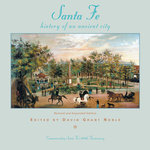
Edited by David Grant Noble
2008. In 2010, Santa Fe officially turned 400—four centuries of a rich and contentious history of Indian, Spanish, and American interactions.
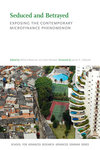
Edited by Milford Bateman and Kate Maclean, foreword by James K. Galbraith
2017. The contributors contend that over the last twenty years, microfinance policies have exacerbated poverty and exclusion, undermined gender empowerment, underpinned a massive growth in inequality, destroyed solidarity and trust in the community, and, overall, manifestly weakened those local economies of the Global South where it reached critical mass.

Edited by Gerald W. Creed
2006. The concept of “community” is ubiquitous in the way we talk and think about life in the twentyfirst century. Political and economic projects from rainforest conservation to urban empowerment zones focus on “the community” as the appropriate vehicle and target of change.
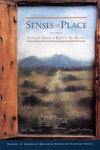
Edited by Steven Feld and Keith H. Basso
1996. The complex relationship of people to places has come under increasing scholarly scrutiny in recent years as acute global conditions of exile, displacement, and inflamed borders-to say nothing of struggles by indigenous peoples and cultural minorities for ancestral homelands, land rights, and retention of sacred places-have brought the political question of place into sharp focus.

Edited by Stephen D. Houston
2012. This book builds on earlier projects about the origins and extinctions of script traditions throughout the world in an effort to address the fundamental questions of how and why writing systems change. The contributors—who study ancient scripts from Arabic to Roman, from Bronze Age China to Middle Kingdom Egypt—utilize an approach that views writing less as a technology than as a mode of communication, one that is socially learned and culturally transmitted.
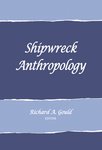
Edited by Richard A. Gould
1983. “Shipwrecks are part of the legitimate domain of anthropology and can produce results that are as significant for our ability to explain variability in human behavior as any other kind of archaeology, whether it deals with stone tools in a European Paleolithic rockshelter or ceramics contained in a sixteenth-century Spanish shipwreck.” So argues Richard A. Gould, the editor of this volume originating from a 1981 School of American Research advanced seminar.
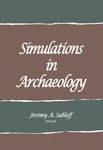
Edited by Jeremy A. Sabloff
1981. This book aims to clarify the reasons for using systems models and computer simulations in seeking to understand dynamic cultural patterns. Computer simulations grow logically out of the steps taken by archaeology in the past century: from random data collection to cultural description, proceeding through chronological ordering to interest in process, and finally to systems construction.

Edited by James F. Brooks, Christopher R. N. DeCorse, & John Walton
2008. Growing unease with grand theories of modernization and global integration brought twelve scholars from four disciplines to the School for Advanced Research for an experiment with the research genre known as microhistory. These authors now call for a return to narrative, detailed analysis on a small scale, and the search for unforeseen meanings embedded in cases.

Jason S. Shapiro
2005. Until recently, archaeologists have rarely studied prehistoric architecture as if it were an artifact comparable to pottery or stone tools. Following the premise that built space embodies social organization, Jason Shapiro takes a fresh look at architectural data from Arroyo Hondo Pueblo, a fourteenth-century site in the northern Rio Grande Valley of presentday New Mexico.
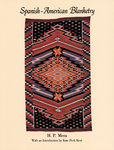
H.P. Mera; with an introduction by Kate Peck Kent
1987. In 1984, while studying textiles in the collections of the School of American Research, Kate Peck Kent discovered a manuscript on Spanish-American weaving by the late H.P. Mera, curator of archaeology at Santa Fe’s Lab of Anthropology. This forgotten manuscript describes the origin and history of the distinctive textiles woven by Spanish-Americans in New Mexico.
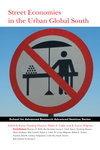
Edited by Karen Tranberg Hansen, Walter E. Little, and B. Lynne Milgram
2014. This book focuses on the economic, political, social, and cultural dynamics of street economies across the urban Global South. Although contestations over public space have a long history, Street Economies in the Urban Global South presents the argument that the recent conjuncture of neoliberal economic policies and unprecedented urban growth in the Global South has changed the equation.
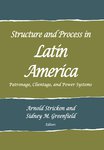
Edited by Arnold Strickon and Sidney M. Greenfield
1972. This book provides analysis of social anthropology and approaches to the study of patronage and clientage from work done in Latin America in the late 1960s. Essays include discussions on topics as diverse as the effect of societal structures on the actions of individuals and communities wherein women play the roles of both patrons and clients.

Leslie Shipman with Rosemary Carstens
2007. Delicious meals served in the School for Advanced Research’s famed Douglas W. Schwartz Seminar House fuel the critical and creative thinking that goes into many of our books.
T - Titles by Alphabet
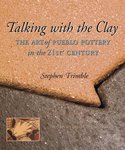
Stephen Trimble
2007. When you hold a Pueblo pot in your hands, you feel a tactile connection through the clay to the potter and to centuries of tradition. You will find no better guide to this feeling than Talking with the Clay.

Edited by George J. Gumerman
1994. Two dozen leading archaeologists isolate a number of themes that were central to the process of increasing complexity in prehistoric Southwestern society, including increased food production, a greater degree of sedentism, and a dramatically increasing population.
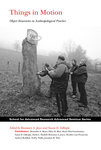
Edited by Rosemary A. Joyce and Susan D. Gillespie
2015. Complementing the concept of object biography, the contributors to this volume use the complex construct of “itineraries” to trace the places in which objects come to rest or are active, the routes through which things circulate, and the means by which they are moved. The contributors advocate for a broader engagement with the mobility of things, from the point at which things emerge from source material to the organization of their manufacture and use, their subsequent movements as mediated by economic and ritual exchanges, their deposition in places that become archaeological sites, their emergence through research and subsequent curation in museum collections, and their circulation in the contemporary world, including through reproduction in other media. Ultimately, the contributors explore movement as a fundamental capacity of things and demonstrate the dynamic capacity of things in motion.

Edited by Jeremy A. Sabloff
2003. New insights from the Tikal excavations and epigraphic breakthroughs suggest that a thriving marketplace existed in the center of the city, that foreigners comprised a significant element of its populace, and that differences in tomb form and contents signal the changing fortunes of Tikal’s rulers.
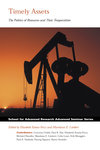
Edited by Elizabeth Emma Ferry and Mandana E. Limbert
2008. Oil is running out. What’s more, its final depletion, once relegated to a misty future, now seems imminent. In all the more or less apocalyptic discussions of oil and similar depleted resources, nature, labor, and time converge. This volume focuses on how resources, resource-making, and resource-claiming are entangled with experiences of time.
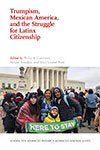
Edited by Phillip B. Gonzales, Renato Rosaldo, and Mary Louise Pratt
2021. For Latinx people living in the United States, Trumpism represented a new phase in the old struggle to achieve a sense of belonging and full citizenship. This volume situates a new phase of presidential politics in relation to what went before and asks what new political possibilities emerged from this dramatic chapter in our history.
re entangled with experiences of time.
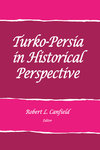
Edited by Robert L. Canfield
1991. The Islamic culture that developed in the ninth and tenth century in what is now Eastern Iran was to have a significant impact on most Muslims of west, south, and central Asia. Under the patronage of Persianized Turkic Muslim rulers, the culture spread westward to the Mediterranean and eastward to India. Especially in the early centuries of Islam, Turko-Persia represented a distinctive variant of Islamic life and thought in these regions, particularly among the elite. But after the fifteenth century regional variants started to emerge.
U - Titles by Alphabet
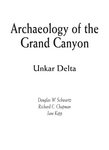 Unkar Delta
Unkar DeltaDouglas W. Schwartz, Richard C. Chapman, and Jane Kepp
1980. This book is the first volume in SAR’s Archaeology of the Grand Canyon series. It provides information on the archaeological excavation conducted at the site during the late 1960s.

Edited by Mitchell S. Rothman
2001. In Uruk Mesopotamia & Its Neighbors, ten field and theoretical archaeologists working in the area today offer an overview and analysis of new data and interpretations for Greater Mesopotamia during the late fifth and fourth millennia B.C.
V - Titles by Alphabet
 The Valley of Mexico
The Valley of MexicoEdited by Eric R. Wolf
1976. The chapters in this volume present an important contemporary interpretation of the cultural and archaeological legacy of the Valley of Mexico, a rich and ancient place where the presence of the past is all around. The contributors apply a powerful explanatory model for the development of civilization in terms of environment, population growth, food production, settlement, social differentiation and hierarchy, along with the importance of local and regional interactions involving trade.
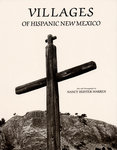
Text and photographs by Nancy Hunter Warren
1987. Nancy Hunter Warren trained her camera on scenes rarely witnessed by outsiders-a Penitente service, the blessing of a ditch, feast days, religious processions, the interiors of houses and village churches.
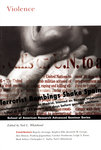
Edited by Neil L. Whitehead
2004. Can we understand violence not as evidence of cultural rupture but as a form of cultural expression itself? Ten prominent scholars engage this question across geographies as diverse at their theoretical positions, in cases drawn from fieldwork in Indonesia, Cambodia, Mozambique, Rwanda, Sierra Leone, South Africa, South America, Sri Lanka, Spain, and the United States.
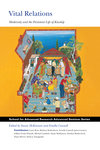
Edited by Susan McKinnon and Fenella Cannell
2013. For more than 150 years, theories of social evolution, development, and modernity have been unanimous in their assumption that kinship organizes simpler, “traditional,” pre-state societies but not complex, “modern,” state societies. And these theories have been unanimous in their presupposition that within modern state-based societies kinship has been relegated to the domestic domain, has lost its economic and political functions, has retained no organizing force in modern political and economic structures and processes, and has become secularized and rationalized. Vital Relations challenges these notions.
W - Titles by Alphabet

Douglas W. Schwartz, Jane Kepp, and Richard C. Chapman
1979. The Walhalla Plateau, part of the Grand Canyon’s north rim, was the site of seasonal farming by prehistoric Pueblo Indians who later left behind their agricultural terraces and small stone farmhouses.
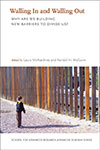
Edited by Laura McAtackney and Randall H. McGuire
2020. The contributors to this volume illuminate the roles and uses of walls around the world—in contexts ranging from historic neighborhoods to contemporary national borders.
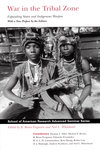
Edited by R. Brian Ferguson and Neil L.Whitehead; With a New Preface by the Editors
1992. War in the Tribal Zone, the 1991 anthropology of war classic, is back in print with a new Preface by the editors. Their timely and insightful essay examines the occurrence of ethnic conflict and violence in the decade since the idea of the ‘tribal zone’ originally was formulated.
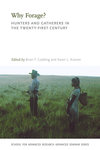
Edited by Brian F. Codding and Karen L. Kramer
2016. Why Forage? shows that hunting and gathering continues to be a viable and vibrant way of life even in the twenty-first century.

Edited by Patricia L. Crown
2001. Women & Men in the Prehispanic Southwest takes a groundbreaking look at gendered activities in prehistory and the differential access that women and men had to sources and symbols of power and prestige.
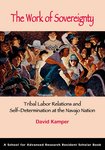
David Kamper
2010. The Work of Sovereignty is a study of organizing campaigns and grassroots, ad hoc collective political actions carried out by employees trying to increase control over their workplaces and their say in the political life of their communities in Indian Country. By studying them, the author takes an on-the-ground approach to tribal labor relations that puts tribal workers at the center of the action. Attending to indigenous peoples as both economic and political members of their community in this way also sheds light on processes of indigenous self-determination that are not always as readily visible as those in courtrooms and tribal council chambers.
X - Titles by Alphabet (No listings at this time)
Y - Titles by Alphabet
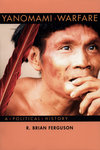 Yanomami Warfare
Yanomami WarfareR. Brian Ferguson
1995. Generations of college students know the Yanomami as the example of “natural” aggression in human society. These reputedly isolated people have been portrayed as fiercely engaging in constant warfare over women, status, and revenge. Ferguson argues persuasively that the Yanomami make war not because Western influence is absent, but because it is present.

Sallie R. Wagner, J. J. Brody, and Beatien Yazz
1983. Beatien Yazz’s life and work are examined by Sallie Wagner, long-time friend; J. J. Brody, director of the Maxwell Museum of Anthropology, University of New Mexico; and Beatien Yazz himself.